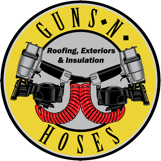8 Common Causes of a Leaky Roof
A roof is one of the most important parts of your home. It keeps your family and belongings safe and dry. Unfortunately, roofs can develop problems, especially in the unpredictable climate of Alberta. This can lead to leaks and water damage.
Half the battle of fixing a leaky roof is understanding the root cause. Let's discuss 8 common reasons for leaky roofs in Calgary. We'll also provide tips on how to prevent these problems from occurring again
Leaving a leak unattended is never a wise option. Get in touch with our team to get professional roofing advice about how to stop your leaky roof from dripping. We’ll get back to you within 24 hours and can always schedule a roof repair if your roof isn’t holding up.
Why Are Roof Leaks Dangerous?
A roof leak can be dangerous for a few reasons. First of all, an unattended leak can damage your roofing materials and shorten the life of your roof. Second, a roof leak can cause water damage to your home's interior. This can lead to costly repairs down the road.
Finally, if you have a roof leak in the wintertime, it could lead to an ice dam forming. An ice dam can cause even more extensive water damage to your home.
Addressing even the smallest leak right away is always the wisest course of action. Professional repairs prevent little drips from becoming big disasters. So give us a call at the first sign of water leaking through your roof.
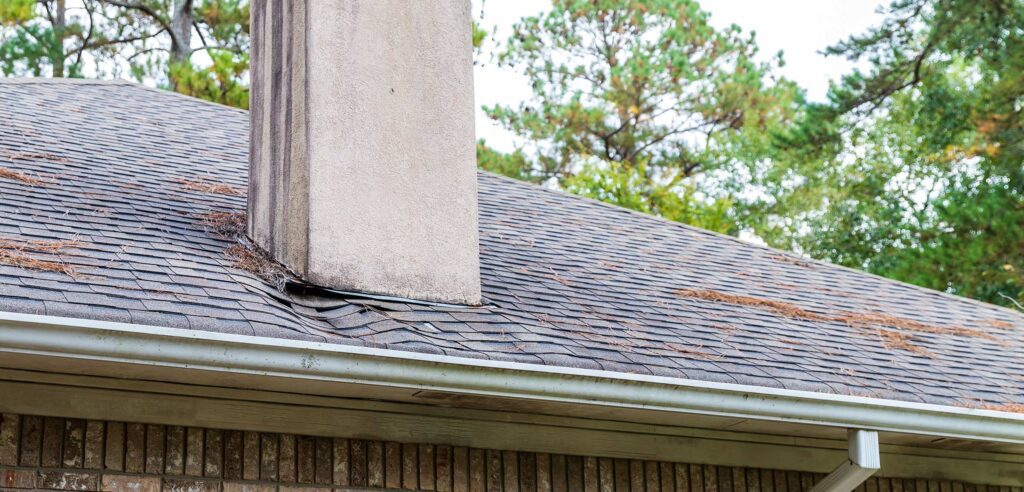
Common Causes of Roof Leaks
Many things can go wrong with a roof and cause it to leak. Here are some of the most common roofing problems that cause leaks and drips around your home
Ice Dam Buildup
Ice dams are a common roofing problem in Alberta. An ice dam occurs when snow and ice build up along your roof's edge. This prevents water from draining properly off of your roof, which can cause leaks to develop. Ice dams often form due to poor ventilation in the attic space of an older home
If you have an older home with no insulation in the ceiling or inadequate insulation, heat rising from your living spaces may melt any snow on top of your roof. That snow will then refreeze along the edges when it reaches colder temperatures at the exterior. This causes an ice dam to form on your roof's edge.
The best way to prevent an ice dam is by properly insulating your attic space and ensuring that there is proper ventilation. You can also install Heat-Line to melt the snow and ice before it has a chance to cause problems.
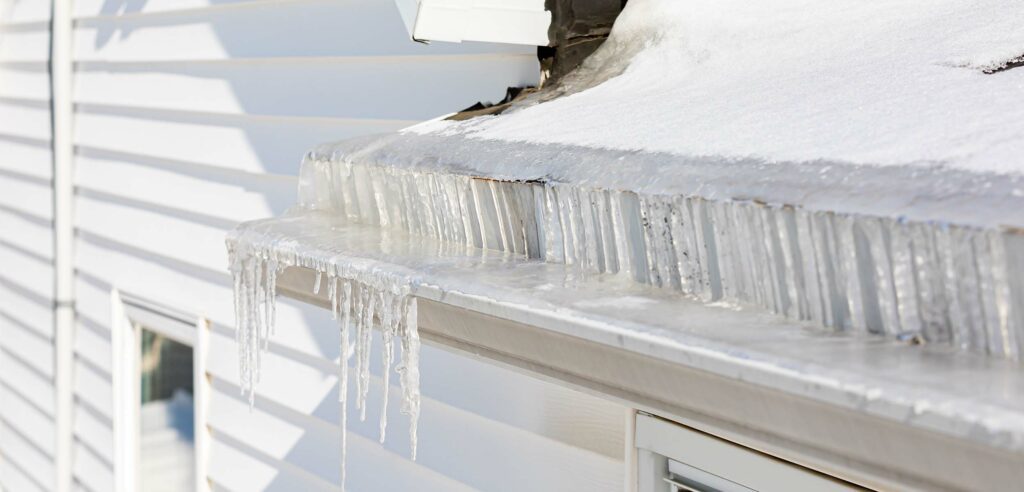
Cracked Flashing
Flashing is a metal strip installed around roofing materials where they meet walls, chimneys, or other roofing elements. It helps seal the roofing material and prevents water from seeping into the seams. If flashing is not installed correctly, cracked, or missing altogether, water will be able to leak through these areas.
Even the smallest leaks slowly damage your roofing materials and infrastructure. The best way to prevent this problem is by having your roof inspected regularly by professionals who know what unhealthy flashing looks like.
Missing or Loose Shingles
Shingles are one of the most common roofing materials and standard for most residential construction in Alberta. But even weather-resistant shingles can be damaged by wind, rain, or hail over time. In fact, more than ½ of all hail damage in Canada occurs in Alberta.
If shingles are missing or loose, water will be able to seep through these areas and cause roof damage. Make sure to inspect your roof following major hail storms. And have a professional roofer repair any damaged shingles immediately.
Clogged Gutters
If your gutters are not properly maintained, they can easily become clogged with debris like leaves, sticks, and ice. This blocks proper drainage of water off of your roof during a storm or snowmelt. And water that isn’t draining is a risk for causing leaks.
Regular maintenance and cleaning of gutters, eavestroughs, and fascia is every homeowner’s responsibility. Annual gutter inspections are one of the easiest ways to keep your roof’s drainage channels open and flowing. Consider installing a leaf guard if your property has lots of trees or you live in a windy area.
Roof Valleys Not Sealed
Valleys are roofing elements that help channel water from one side of the roof to another. If valleys become damaged or clogged with debris, water will pool and potentially leak into your home. A faulty seal can also lead to drips in your attic.
Keeping valleys clear and sloped properly is another part of annual roof maintenance. Valleys should be evaluated before (or during) every winter to avoid pools becoming giant hunks of ice.
Cracks in Your Chimney
If your roof has a chimney, it will be especially susceptible to roof leaks. Cracks in the roof around your chimney can cause roof damage over time as water seeps through. Look for holes in the mortared areas of your chimney or wear and tear along the top.
For some, fixing a chimney crack simply means replacing the worn or missing mortar (cement type mixture used during stone or brickwork). In other cases, a leak near your chimney could be flashing or shingles that have come loose.
Chimney repairs are very particular and always best managed by our experts at Guns N Hoses.
Worn Seals Around Skylights or Windows
If you have skylights in your home your roof is more susceptible to leaks! Skylights are a common source of roof leaks because they often have seals that wear out over time due to exposure from sun and rain.
Minor leaks in skylight seals can be fixed with some silicone sealant and a steady hand. If you notice a drip near a skylight or window, start with this method. But leaks that are always dripping, have significant water flow, or won’t stop after applying sealant, should be looked at by the pros.
Problems with Roof Vents
Roof vents are those little pipes jutting out of your roof. They take moisture out of your home, preventing it from causing problems to the interior. If the seals around roof vents become worn out over time, water will be able to leak into your home and cause roof damage.
In Alberta, with its sudden storms and frequent chinooks, adequate roof ventilation is essential. Let our team make sure your roof vents are equipped for the rest of the year. Gun N Hoses ventilation warranties also cover ventilation work that goes below your roof.
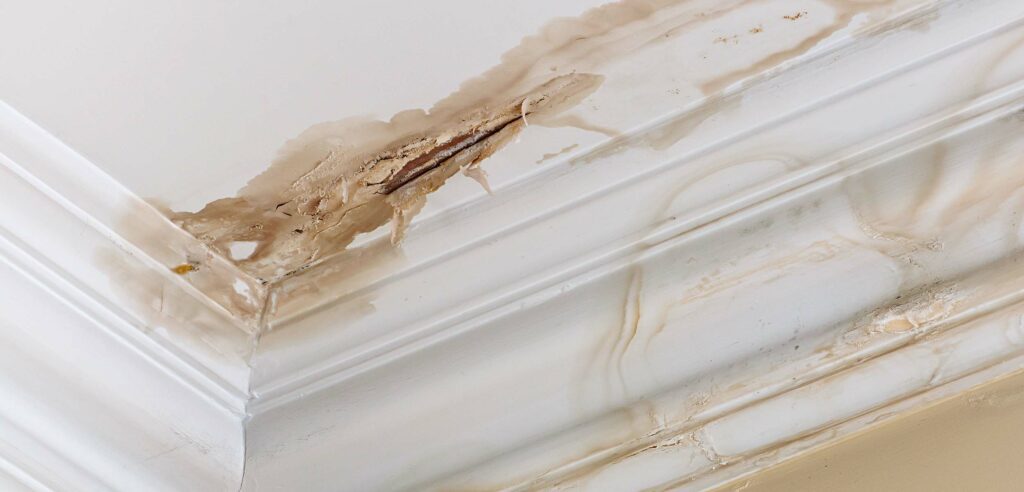
Roof Repairs: Better Sooner Than Later
A roof leak can be a serious problem for any homeowner. If you think that your roof has been leaking or the signs are obvious, it's important to contact a roofing professional immediately.
Never ignore a roof leak and be aware of the trouble areas that your roof may be vulnerable to. By taking care of roof leaks quickly, you'll save money on repairs later down the road!
When trying to make a home more energy-efficient, the attic is often the first place homeowners try to improve. An energy-efficient attic allows homeowners to save money on heating and cooling a home, and will enable them to live more comfortably at a temperature that they find desirable.
Guns N Hoses offers insulation installation services that utilize thermal imaging technology to help improve your home’s energy efficiency. If your home and attic are not energy-efficient and you require new ventilation or insulation, please do not hesitate to contact us.
Seal All Air Leaks
When outside air leaks into your home, it can affect the tempered air that is keeping your home energy-efficient. To avoid this issue and further problems with unwanted moisture build-up that can cause structural damage to your home, it is essential to ensure that all air leaks in your home are sealed properly, including in your attic.
Common places in your attic that can be susceptible to air leaks include:
- Around the plumbing stack and any other pipes.
- Around wires or ceiling light fixtures that penetrate the attic floor and partition and exterior wall top plates.
- Around ducting that enters the attic from inside the house.
- At the junction of the ceiling and interior wall partitions.
- At the top of interior and exterior walls.
- Around attic hatches.
- Around the chimney.
Keep Your Attic Well Ventilated
Keeping your attic as cool as possible through ventilation is important for energy efficiency in your home. Attic vents allow air to flow in and out of your house at the right volume and deter any build-up of heat that will lead to less efficient energy use. Proper ventilation in your attic reduces summer heat build-up without the overuse of air conditioning and will also prolong the life of your home's roofing.
The placement of your vent should prevent any outside weather from breaching your home as to keep your belongings and insulation free from damage due to moisture.
At Guns N Hoses, we provide and install solar attic vents which will connect your attic to the outside air. These vents use solar power to pull hot air out of your attic and cycle in fresh, cool air.
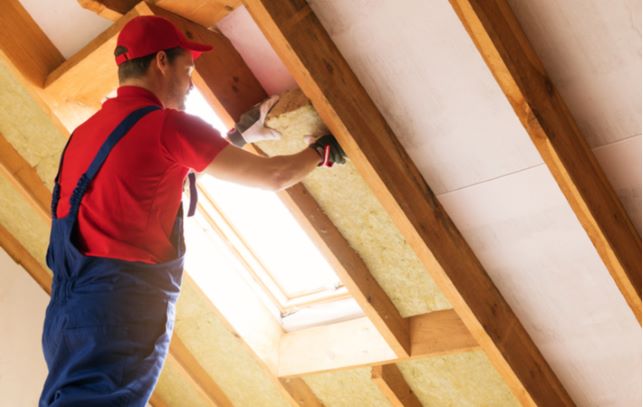
Ensure You Have Adequate Insulation
Having insulation that is properly installed and in good condition in your attic can help make your home more energy-efficient during any season of the year. With a properly insulated attic, you will use less energy to heat or cool down your home.
In the warmer months of the year, insulation in your attic provides you with protection from heat being transferred into your home through its roof.
During the winter, insulation creates a thermal barrier that will prevent your home from losing heat through its roof. Without an established thermal barrier, ice dams can potentially be created on the outside of your house.
Ice dams are created by snow or ice melting on your roof due to an overly warm attic. The liquid created from the snow or ice melting eventually trickles down your roof and refreezes on the edges and gutters of your home, potentially causing leaks in your attic.
Guns N Hoses provides a thermal imaging service that will capture infrared energy transfers in a palette where warmer objects appear brighter and cooler objects appear darker. This allows us to see where insulation may need to be replaced. If your home needs new insulation, Guns N Hoses offers full insulation installation services.
Add Radiant Barriers to Your Attic
Radiant barriers are a special type of insulation that is designed to reflect heat back into the area in which they are installed.
If you live somewhere that experiences very hot summers, you can line the underside of your roof with a radiant barrier to prevent heat from entering from above. This will keep your home cool without having to use too much additional energy for air conditioning.
If you live in an area that often has cold winters, the floor of your attic can be lined with a radiant barrier to stop heat from entering your attic and quickly escaping. Overall, this will increase the energy efficiency of your home by keeping it warm without the overuse of additional heating.
Make Your Attic Entryway More Efficient
The entranceway into your attic is an often overlooked area when trying to make your home more energy-efficient. Ensuring that the doorway or hatch into your attic is properly sealed when closed will stop any potential for air leaks, and allow your insulation and vents to do their job efficiently.
Any potential leaks into the rest of your home from your attic or improper installation of vents or insulation can increase the amount of energy you have to use to keep your home at the proper temperature.
Applying Energy-Efficient Practices to the Rest of Your Home
Using the aforementioned tips to make your attic more energy-efficient can apply to other areas of your home as well. Sealing any air leaks and paying close attention to entrances and doorways can help you create a more energy-efficient home overall.
Keeping the temperature of your home properly regulated will save you money, help the environment, and help you stay comfortable throughout every season of the year.
Guns N Hoses is here to help you with your needs relating to making your home more energy-efficient — contact us if you have any questions or inquiries about our services and how we can help you get your attic up to date with new ventilation and insulation.
Insulating your home is vital for both your physical and financial comfort, but many homeowners make one basic mistake when it comes to insulation: they neglect the attic. A poorly insulated attic can be a tremendous source of heat loss. After all, heat rises—remember 6th grade science class?
You might be experiencing higher utility bills than usual this winter, but how can you tell whether it’s due to lousy attic insulation or something else entirely? That’s where we come in. The team at Guns ‘N’ Hoses is here to tell you about the biggest red flags for attic insulation issues, so that you never have to worry about losing heat to the cold November rain again.
What Are the Signs of a Poorly Insulated Attic?
Attic insulation can reduce your cold-weather heating costs by as much as 30%, so it’s critical to take care of it. Attics with sub-standard insulation have a few key tells, so keep your eyes out for the following signs:
Bathroom Fan Staining
The number one sign you have an attic insulation issue is staining around your bathroom fan. Typically, you’ll see a water stain around your bathroom fan that is yellow-brown in colour.
You may also notice staining around other fans or light fixtures in your home. This is because when your attic isn’t insulated properly, ice can form around the fan’s vent pipe.
As temperatures increase, the ice melts, dripping around the fan opening and causing staining.
Rising Energy Bills
This is one of the most obvious signs that your home has insulation problems, but it’s also one of the most reliable. Remember, insulation doesn’t just keep heat inside your house during winter—it also prevents cool air from escaping if you run an air conditioner in the summer.
If you notice suspiciously high utility bills at any time during the year, it’s time to check your insulation. You may also notice that your furnace or air conditioner is running frequently or almost all the time. If your insulation isn’t up-to-par, your furnace and AC will have to work harder to maintain your home’s temperature.
Mould and Moisture
Mould and moisture issues are very common in Alberta, since the temperature can change drastically from day to night. One of the best ways to check for poor attic insulation is to actually take a look inside your attic.
If the air is moist, chances are good that at least some of it is coming in from outside, and that spells insulation problems. Moist air often causes mould to form in enclosed spaces too, so check in the corners and behind any furniture you might be storing up there.
Drafts
If your attic has severe insulation issues, the cold air up there will probably create a draft near the hatch. Go to the area surrounding the hatch and feel the air with your hand. If it seems cooler than the air elsewhere in your home, your attic is probably the culprit behind your home’s heat loss.
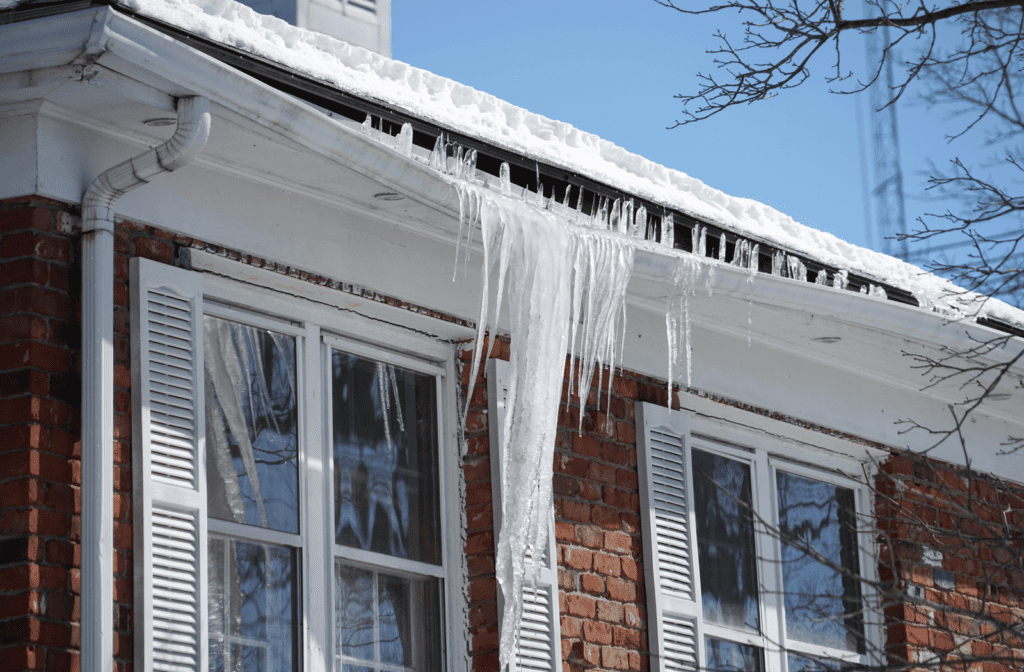
Ice Dams
Problems with your attic insulation will result in more heat leaking through specific places on your roof. When that happens, it can cause the snow above those areas to melt and run down your roof as liquid water until it’s away from the heat—at which point it will refreeze.
The resulting buildup of ice along your roof’s edges is called an ice dam, and it can cause significant damage to shingles and tiles. If you see a suspicious number of icicles hanging off your rooftop in the winter, call a roofing company to assess your roof for damage (and have them check your attic insulation while they’re at it).
Pest Infestations
The most common pest problem in Calgary and surrounding areas are squirrels. Despite their small size, squirrels can do a lot of damage to your insulation. Insects can be another problem.
Most crawling insects come into homes through ground-level areas, and rodents can get in from just about anywhere. However, flying insects such as bees and wasps often build hives in attics, and the attic can be a prime spot for small birds to build nests. If you see anything with wings, have a pro come visit and check out your attic insulation for unwanted guests.
Frozen Pipes
Completely frozen pipes are rare, but it can happen. More commonly, you’ll probably end up with the bathroom fan staining we described above.
However, many homes have piping that runs through or near the attic. Poor attic insulation can leave these pipes vulnerable to freezing during the winter, as heat leaks to the outside and cools the air around them.
Water Leaks
If your attic pipes do freeze, there’s a chance they’ll crack when they eventually thaw out and the metal warps. If that happens, you’ll probably notice water dripping from your ceiling or down your walls.
Water damage can weaken the structural integrity of your home and reduce its value significantly, so turn off the water in your home as soon as you notice this problem and get in touch with a plumber. While you’re at it, call an insulation specialist to fix the problem in your attic and make sure your pipes won’t freeze again in the future!
Know the Signs & Protect Your Attic
Recognizing the signs of damaged or inadequate attic insulation doesn’t just lower your utility bills and keep your indoor temperature comfortable. It also prevents the pipes and surfaces in your attic from damage that could easily affect other parts of your home.
If you suspect that your attic is suffering from an insulation problem, contact a licensed professional insulation expert who can accurately diagnose the problem and provide you with a quote for effective repairs.
